Forever associated with the gulf war in all medias, the cold war successor to the mythical Jeep went on a long way, dozens of years of development with many fathers. Born for the cold war, it was condemned by IEDs in the 2000s, and ultimately towards an uncertain fate as of today, despite many imitations round the world. The post here is dedicated to the study of armoured versions only, either in US or foreign service.
All these vehicles lacked a real Payload capacity, sufficient off-road performance to deal wit the worst terrain NBC protection, in addition to a true standardization between models, a true nightmare of maintenance and supply for the US Army and Marines. The Army wanted one vehicle that could perform many roles—transport, weapons carrier, ambulance, command vehicle—across all terrain.
In 1979, the U.S. Army drafted a document outlining its requirements for a High Mobility Multi-Purpose Wheeled Vehicle, or HMMWV. It needed to be agile. It needed to be be able to go places that defied the imagination. And it needed to last a minimum of 12 years under the most unforgiving conditions. In July of that year, AM General Corporation began preliminary design work. An impossibly short 11 months later, the first prototype, the M998, was already in testing. In June 1981, the Army awarded AM General a Phase 1 request contract for development of several more prototype vehicles to be delivered to the U.S. government for another series of even more exhaustive and grueling tests. These AM General prototypes proved to be the muscular new breed of vehicle the Army had been looking for. As a result, the company was awarded the initial production contract for 55,000 HMMWVs for delivery in 1985.
In the years since, the AM General HMMWV has proven to be a valuable asset in the military's arsenal. Given the name "Humvee" by soldiers, this unstoppable vehicle has played a critical role in military actions around the globe. All told, more than 150,000 HMMWVs have been produced for the U.S. Armed Forces and friendly overseas armies. It was only a matter of time before the Humvee's extraordinary powers were called upon by the nonmilitary sector. AM General's 1991 decision to sell to the public finally allowed nonmilitary personnel to experience the exceptional off-road performance and problem-solving abilities of a military-based utility vehicle. Save for a few comfortable and practical refinements, the Hummer is virtually unchanged from its much-storied military counterpart. All of the power, durability and versatility of the military Humvee is available to you in the Hummer, the world's ultimate off-road vehicle.
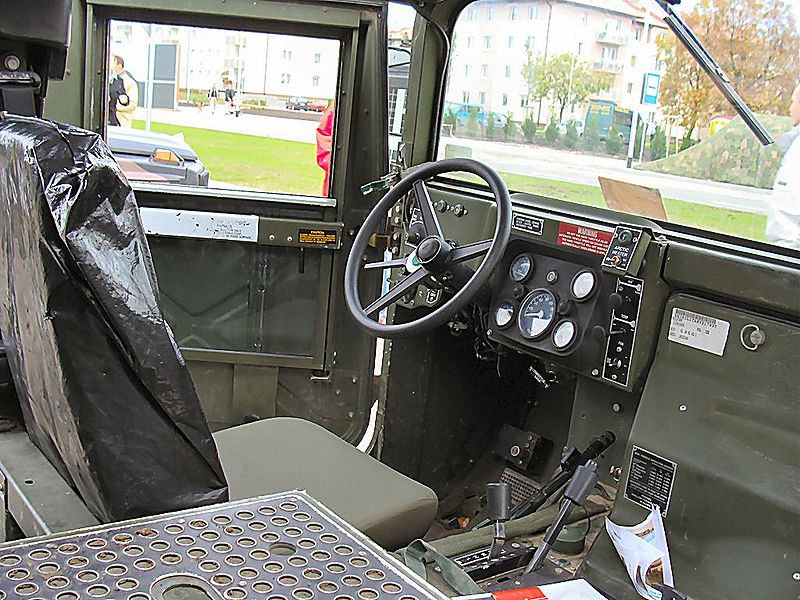
Interior of a Humvee
In 1979, the U.S. Army issued requirements for a new vehicle. It need the following:
In the end, AM General Won for its superior off-road performance and Independent suspension design. The final prototype had also a robust drivetrain and showed in general better reliability in overall army testing. Thus in 1982 at the conclusion of the test campaign, AM General won the contract.
*With the original soft top.
The vehicle had wide track, intentional for stability and off-road performance.
Its original GM 6.2 L V8 diesel, naturally aspirated was rated for 150 hp (112 kW), for a torque of 330 lb-ft (447 Nm) and fuelled by Diesel (JP-8 compatible). Its transmission was a GM TH400 automatic
with 3-speed (forward) and a resverse, and a transfer case with 2-speed, full-time 4WD. It had as differentials a Torsen limited-slip. Its Suspension and Mobility comprised independent double A-arm (all four wheels) and suspended by Coil springs with additional hydraulic shock absorbers and portal Hubs. There was a raised axle centerline to reduce the drivetrain stress and provide exceptional ground clearance. In fact in the initial presentation movie it waqs shopwing negociating a mountain rover bed jagged with boulders.
Performance-wise, the M998 couold reach 105 km/h (65 mph) on flat, climb a 60% gradient, a 40% side slope, ford 0.76 m (30 in) without kit and had a turning radius of 7.3 m. Brakes were Hydraulic disc, inboard for better protection, and the parking brake was driveshaft-mounted. The Tires were 37×12.5 R16.5 on all four. There was of course a run-flat system which was optional on early versions and an electrical System, 24-volt military standard. The Alternator had a Dual 100-amp units. Its EMI shielding was Extensive and NATO-compatible. It had the cold-start support with an Engine block heater.
Body & Construction used a Frame, a Boxed steel ladder frame for extra rigidity. The frame was then covered with welded-on Aluminum panels that were corrosion resistant. The Roof would be seither a soft top or open top, and the doors were proposed in option in Canvas or aluminum. The Capacity was of four, with a driver and three 3 passengers. One was seated in the forward cab, and the two others behind. Not three as the tall transmission tunnel made it impossible. The rear cargo bed was configurable and up to 4 more men could climb in. The seating used fold-down troop seats.
The Armament was Optional with a pintle or ring mount, and the most distinctive feature was this mount at the center, rear part of the cab, for a centrally standing gunner (so standing above the transmission tunnel). At first there were not armour panels. Typically this standard US army pintle mounted either a M60 or M240 LMG. But with a quick ring socket change it could accept either the heavier M2 .50 cal HMG or the Mk 19 grenade launcher. There was no armour as these rarly vehicles relied on mobility and not armor, but the bullet-poof windshield. The early Humvee was designed around mobility over protection and standardization for tactical air transportability (C-130) and utter modularity for Reconnaissance, Logistics, Command and control, Rapid maneuver warfare.
As Strengths it had Exceptional off-road mobility, High payload for its size, Mechanical simplicity and a modular design, as distributed to all frontline units of the US Army and some NATO allies in the late cold war. No changes were made even after the Gulf war. However with the 2001 war on Iraq and ongoing war on terror in Afghanistan its limitations were soon apparent with the absence of ballistic or mine protection. Plus the base vehicle had limited growth margin for armor and these early engines were found underpowered by modern (2000s) standards.
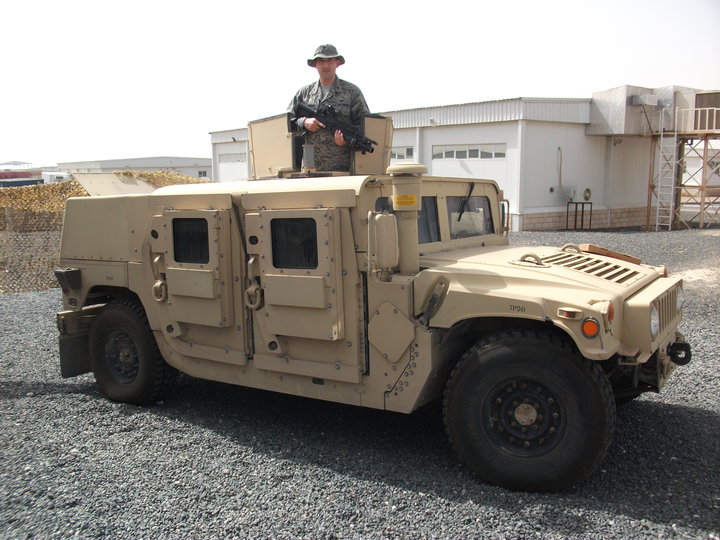
Humvee with a FRAG-6 reinforced add-on armor in April 2010.
M996 Mini-Ambulance, Armored
M997 Maxi-Ambulance, Armored
M1025 Armament Carrier, Armored
M1026 Armament Carrier, Armored W/W
M1036 TOW Armored W/W
M1043 Armament Carrier, Up-Armored
M1044 Armament Carrier, Up-Armored W/W
M1045 TOW Up-Armored Armor
M1046 TOW Up-Armored Armor W/W
M1109 Up-Armored Armament Carrier
M1114 Up-Armored Armament Carrier
M1116 Up-Armored HMMWV
M1121 TOW Armored
M1145 Up-Armored HMMWV
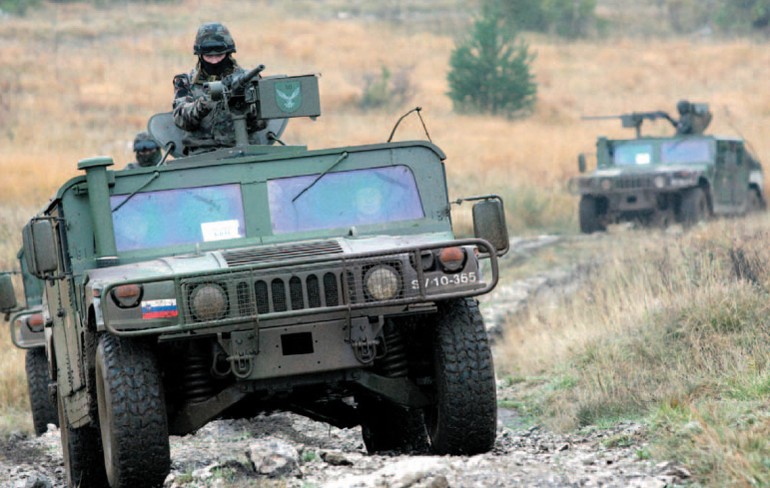
Slovenian Humvees
The USA now still operates the Hummer and many versions and improvised ones to a total of perhaps 100,000 overall given the Army took delivery of 260,000 vehicles, the Marine Corps had 44,000 and that included 1980s vehicles completely overhauled anew. But they are also in service with 71 countries, in armoured and unarmoured versions, so it would be too complicated to separate them as some had optional armour packages.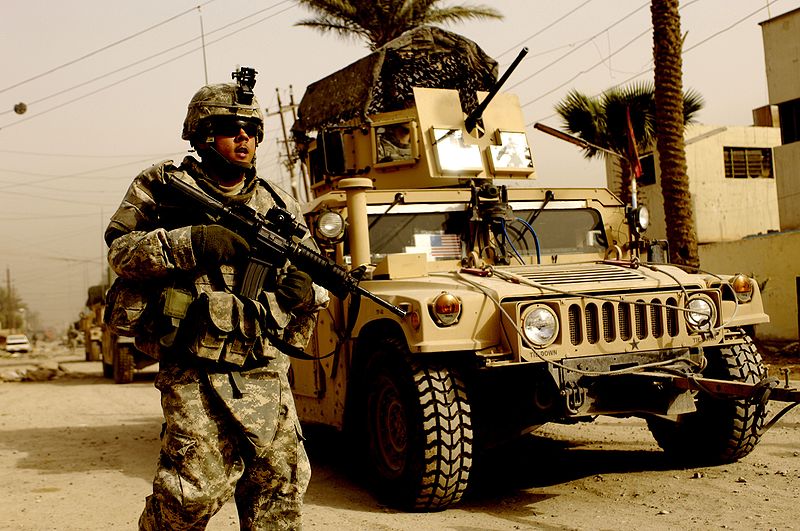
Humvees in patrol March 2008
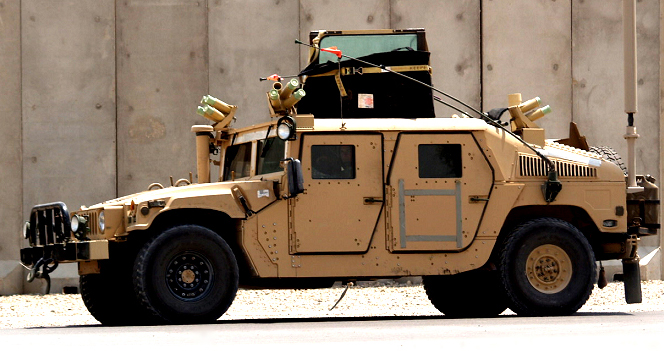
M1114 with a Kevlar Armour in patrol
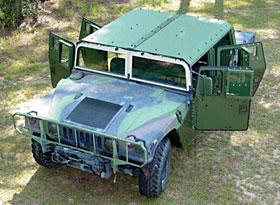
Marine Humvee M1123 with Bolt-on Armour.
Other customers includes: Albania (20), Bahrein (unknown), Bosnia-Herzegovina (a few used for de-mining operations in Iraq), Bolivia: (50 vehicles only for the "Green Devils" anti-narcotic unit and Rangers), Botswana (40), Bulgaria (52), Canada (A few used by y JTF-2 and CSOR in Afghanistan), Chad (Some, Sold through the Foreign Military Sales program), Croatia (85), Czech Republic (601st Special Forces Group), Denmark (30), Djibouti, Dominican Republic, El Salvador (20), Ecuador (130), Ethiopia, Georgia (110+), Honduras, Hungary (27-Afghanistan), Kazakhstan, Kuwait, Jordan (130+), Kenya, Latvia (60), Luxemburg (43), Macedonia (80), Moldova (39), Monaco (6), Mongolia (30), New Zealand, Norway (6), Panama (7), Oman, Peru (34), Portugal (37), Romania (122), Russia (8, seized in Ossetia and evaluated), Saudi Arabia, Serbia (21), Slovakia, Spain (150+, Marines), Sudan, Tanzania, Thailand, Tunisia (52), Ukraine (110), UAE, Uganda (50), Venezuela, Yémen (13).
Development of the Humvee
The "Humvee" colloquially and officially the "High Mobility Multipurpose Wheeled Vehicle" (HMMWV) was developed by the U.S. military to replace older "jeeps" later dubbed "light utility vehicle" with a single versatile platform. The Need for a New Tactical Vehicle was formulated after the Vietnam war in 1973 already. By the time, the U.S. military relied on a mix of aging vehicles such as the M151 mutt and even the earlier Willys M38 of the Korean war passed on to the national guard, the Willys M606, the Dodge M37 light truck, M422 Mighty Mite. and various commercial utility vehicles adapted for military use such as the Willys M715 (1965), Kaiser Jeep M715 1+1/4-ton 4x4 (1967), or CUCV/COTS M880/980 (1976).All these vehicles lacked a real Payload capacity, sufficient off-road performance to deal wit the worst terrain NBC protection, in addition to a true standardization between models, a true nightmare of maintenance and supply for the US Army and Marines. The Army wanted one vehicle that could perform many roles—transport, weapons carrier, ambulance, command vehicle—across all terrain.
HMMWV Program Begins (1979)
Designed by AM General back in 1979, the now-called Hummer was built strictly as a military vehicle, but has grown in popularity among the general population in recent years. These are considered to be the best off-road vehicles in the world. If you like comfort and style, choose the Hummer to cruise through the desert. The history of the Hummer began in the ranks of the U.S. military 20 years ago. As the logistics of modern warfare changed, so did the military's needs for mobility and flexibility. The militarized civilian trucks in use no longer satisfied the rigorous demands of the U.S. Armed Forces. They required a new breed of vehicle.In 1979, the U.S. Army drafted a document outlining its requirements for a High Mobility Multi-Purpose Wheeled Vehicle, or HMMWV. It needed to be agile. It needed to be be able to go places that defied the imagination. And it needed to last a minimum of 12 years under the most unforgiving conditions. In July of that year, AM General Corporation began preliminary design work. An impossibly short 11 months later, the first prototype, the M998, was already in testing. In June 1981, the Army awarded AM General a Phase 1 request contract for development of several more prototype vehicles to be delivered to the U.S. government for another series of even more exhaustive and grueling tests. These AM General prototypes proved to be the muscular new breed of vehicle the Army had been looking for. As a result, the company was awarded the initial production contract for 55,000 HMMWVs for delivery in 1985.
In the years since, the AM General HMMWV has proven to be a valuable asset in the military's arsenal. Given the name "Humvee" by soldiers, this unstoppable vehicle has played a critical role in military actions around the globe. All told, more than 150,000 HMMWVs have been produced for the U.S. Armed Forces and friendly overseas armies. It was only a matter of time before the Humvee's extraordinary powers were called upon by the nonmilitary sector. AM General's 1991 decision to sell to the public finally allowed nonmilitary personnel to experience the exceptional off-road performance and problem-solving abilities of a military-based utility vehicle. Save for a few comfortable and practical refinements, the Hummer is virtually unchanged from its much-storied military counterpart. All of the power, durability and versatility of the military Humvee is available to you in the Hummer, the world's ultimate off-road vehicle.

Interior of a Humvee
In 1979, the U.S. Army issued requirements for a new vehicle. It need the following:
- High mobility across extreme terrain
- Ability to carry heavy payloads
- Survivability and durability (stronger structure, NBC protection, armour add-ons)
- A Modular design for multiple missions
In the end, AM General Won for its superior off-road performance and Independent suspension design. The final prototype had also a robust drivetrain and showed in general better reliability in overall army testing. Thus in 1982 at the conclusion of the test campaign, AM General won the contract.
Production and Adoption (1984–1985)
First production contract awarded in 1983. It waqs deployed on a few US bases for field operations with troops and after report sent, jusged acceptable and it was officially adopted by the U.S. military in 1984. It entered service in 1985. Early variants included at first a troop carrier, a cargo/troop carrier, and armament carrier, and ambulance and a shelter carrier. Moduled to be adapted were created as well as new chassis.Details of the Humvee
The early Humvee (HMMWV) entered U.S. service in the mid-1980s, focusing on the M998/M1038 family before armor, electronics growth, and heavy up-armoring changed the design. Its official designation was then "High Mobility Multipurpose Wheeled Vehicle" (HMMWV) and it's the acronym that was mouthed out into the popular "humvee" that stuck during the first years of its field deployment and gradual adoption. Manufactured by AM General with the first leaving the factory floor on 1984 it was delivered at first only in the M998 (standard payload) and M1038 (heavy payload) variants.specifications (M998) | |
| Dimensions (L-w-H) | 4.57 x 2.16 x 1.83 m* (15 x 7.1 x 6 ft*) |
| Curb weight | 2,300 kg (5,100 lb) |
| Ground clearance | 406 mm (16 in) |
| Wheelbase | 3.30 m (130 in) |
| Payload | 1,250 kg (2,750 lb) |
| Propulsion | GM 6.2 L V8 diesel, 150 hp (112 kW) |
| Top speed | 105 km/h (65 mph) |
| Suspensions | |
| Range | |
| Armament | |
| Crew | |
| Armor | |
Performance-wise, the M998 couold reach 105 km/h (65 mph) on flat, climb a 60% gradient, a 40% side slope, ford 0.76 m (30 in) without kit and had a turning radius of 7.3 m. Brakes were Hydraulic disc, inboard for better protection, and the parking brake was driveshaft-mounted. The Tires were 37×12.5 R16.5 on all four. There was of course a run-flat system which was optional on early versions and an electrical System, 24-volt military standard. The Alternator had a Dual 100-amp units. Its EMI shielding was Extensive and NATO-compatible. It had the cold-start support with an Engine block heater.
Body & Construction used a Frame, a Boxed steel ladder frame for extra rigidity. The frame was then covered with welded-on Aluminum panels that were corrosion resistant. The Roof would be seither a soft top or open top, and the doors were proposed in option in Canvas or aluminum. The Capacity was of four, with a driver and three 3 passengers. One was seated in the forward cab, and the two others behind. Not three as the tall transmission tunnel made it impossible. The rear cargo bed was configurable and up to 4 more men could climb in. The seating used fold-down troop seats.
The Armament was Optional with a pintle or ring mount, and the most distinctive feature was this mount at the center, rear part of the cab, for a centrally standing gunner (so standing above the transmission tunnel). At first there were not armour panels. Typically this standard US army pintle mounted either a M60 or M240 LMG. But with a quick ring socket change it could accept either the heavier M2 .50 cal HMG or the Mk 19 grenade launcher. There was no armour as these rarly vehicles relied on mobility and not armor, but the bullet-poof windshield. The early Humvee was designed around mobility over protection and standardization for tactical air transportability (C-130) and utter modularity for Reconnaissance, Logistics, Command and control, Rapid maneuver warfare.
As Strengths it had Exceptional off-road mobility, High payload for its size, Mechanical simplicity and a modular design, as distributed to all frontline units of the US Army and some NATO allies in the late cold war. No changes were made even after the Gulf war. However with the 2001 war on Iraq and ongoing war on terror in Afghanistan its limitations were soon apparent with the absence of ballistic or mine protection. Plus the base vehicle had limited growth margin for armor and these early engines were found underpowered by modern (2000s) standards.
Towards the armoured Humvee
There were several variant with a gradual process of up-armouring vehicles in the field, then manufactired add-on pacakaged, and then manufactured, fully armoured variants. With the variants exposed below, we will focus here on the "best" armoured variants of them all: The M1151A1 Up-Armored HMMWV (ECP1). This was the most capable and best-balanced armoured Humvee ever fielded before the platform reached its practical limits.Protection
It was factory-integrated armor (not add-on) and designed to defeat 7.62 mm AP rounds, artillery fragments. It had also an improved blast protection vs earlier models, armored floor and reinforced doors and in general a much better ballistic glass than M1114. It was not MRAP-level, but the best achievable within the Humvee design. Chassis & Survivability Upgrades included the ECP1 (Engineering Change Proposal 1) upgrades with a reinforced frame, heavy-duty suspension, stronger brakes, and a better balanced for a reduced rollover risk compared to M1114. It also had a better handling under full armor load.Powertrain
The M1151A1 ECP1 had a 6.5L turbo-diesel V8 with an improved cooling system and better torque delivery for heavy armor. it was now more reliable under combat loads.Payloads
It was designed to carry the blue Force Tracker, advanced radios, the ECM/CREW IED-jamming systems and had an electrical system upgraded to handle high draw. The M1165A1 was slightly more armor than M1151A1 but designed mainly for command roles. It was heavier and less mobile, not ideal for general patrol or escort albet it had in general a better protection in isolation, but worse balance overall. Plus, its distrubution was confidential compared to the largely used M1151A1. Still, even it was never designed for heavy mine resistance with its flat bottom hull and still had limited growth margin at some point forcing the adoption of MRAPs and ultimately the JLTV.Humvee specifications | |
| Dimensions (L-w-H) | 8.43 x 3.51 x 3.18 m (331 in x 138 in x 125 in) |
| Total weight, battle ready | 3,810 kg (84,00 lbs) |
| Crew | 2+4 (Commander, Driver, 4 infantry) |
| Propulsion | V8, 6.5-liter fuel injected diesel, 200 hp @ 3,600 rpm |
| Transmission | automatic with maximum input torque of 451 lb/ft. (612N-m) |
| Maximum speed | 65+ mph (48 km/h) on road |
| Suspension | Torsion bars |
| Range (Fuel) | (cc Liters/ cc.) |
| Armament | Standard cal.50 M2 (12.7 mm) -see notes |
| Armor | HT aluminium 8 mm - see notes |
| 280,000 | |
Armoured Variants

Humvee with a FRAG-6 reinforced add-on armor in April 2010.
List
M966 HMMWV TOW ArmoredM996 Mini-Ambulance, Armored
M997 Maxi-Ambulance, Armored
M1025 Armament Carrier, Armored
M1026 Armament Carrier, Armored W/W
M1036 TOW Armored W/W
M1043 Armament Carrier, Up-Armored
M1044 Armament Carrier, Up-Armored W/W
M1045 TOW Up-Armored Armor
M1046 TOW Up-Armored Armor W/W
M1109 Up-Armored Armament Carrier
M1114 Up-Armored Armament Carrier
M1116 Up-Armored HMMWV
M1121 TOW Armored
M1145 Up-Armored HMMWV
Early Armoured Humvee Variants (Factory & Field):
M1025A2/M1026A2 Armament carrier
Armor: Light applique armor. Protection: Small-arms (7.62 mm), shell fragments, manufactured in the Late 1990s. They were the first semi-standard armored Humvees, only offering limited protection.M1114 Up-Armored Humvee (UAH)
Role: Patrol, convoy escort. Introduced: 2003–2004. Factory-installed steel armor. Protection: 7.62 mm AP and Artillery fragments. Features Armored doors and armored floor, bullet-resistant glass for a greater weight of 5.2–5.9 tons.It became the most iconic armored Humvee of the Iraq War.Improved Armoured Variants
M1116
It was used for Military police, patrol, and an Improved armor package over the M1114. This protection offered Better blast resistance. Notes: Often confused with M1114; produced in smaller numbersM1151A1 Up-Armored HMMWV (ECP1)
Introduced: Mid-2000s. Armor: Modular, factory-integrated. Protection: Improved IED and ballistic protection. Features: Reinforced chassis, Stronger suspension, 6.5L turbo diesel, Weight c6.3 tons.M1152A1
Armored utility/cargo with same armoure as the M1151A1. Use: Logistics, command vehicles.Maximum Protection Variants
M1165A1
Up-Armored Command & Control, used as Command vehicle, with Heavy integrated armor. It features a roof hatch, had Electronics capacity, a Rear storage. Its level of protection was among the highest for Humvees.Field-Applied & Interim Armoring
M998/M1038 with Add-On Armor
Era: Early Iraq War (2003). Armor type: Field-fabricated steel plates (“hillbilly armor”). Purpose: Rapid protection before factory vehicles arrived. Problems: Excess weight, mechanical failures Protection vs Performance Trade-Offs. Armoring the Humvee caused: Reduced mobility, Overstressed suspension, Higher rollover risk and limited mine protection still. These issues directly led to the MRAP development and JLTV replacement program.M996 Mini Armored Ambulance
In redaction.M997 Maxi Armored Ambulance
M997 Maxi Armored Ambulance: Brand new rigid compartment large enough for 4 stretchers, 8 ambulatory and medics. Equipped with air conditioning and later declined into A1 and A2. Cold air could be equipped with the Gas-Particulate Filter Unit (GPFU) in an NBC environment. The latter system also provides regulation for the crew protective masks or M13 series patient protective masks. Field performances are kept high with a 60%(31°) climbing capability, 40% (22°) side slope, and ford up to 1,52m (60 in) with the kit. The next version A1 only was standardized to the generic A1 standard, but the A2 received new bumpers and structure reinforcements. A self-recovery winch also came as an option. From 2003 on, it also came with various add-on armor packages (P1 and following). The TBD version was added to the lineage in 2009.Post-Irak invasion and Afghanistan Modifications
This chapter is about the lessons learned with the Hummer after the Iraq invasion in 2002 and the long war of 2003-2018, when the last US troops left the Iraqi soil, while policing in Afghanistan is an ongoin process.Operators (generic)

Slovenian Humvees
The USA now still operates the Hummer and many versions and improvised ones to a total of perhaps 100,000 overall given the Army took delivery of 260,000 vehicles, the Marine Corps had 44,000 and that included 1980s vehicles completely overhauled anew. But they are also in service with 71 countries, in armoured and unarmoured versions, so it would be too complicated to separate them as some had optional armour packages.
- - Afghanistan: Operates some 4150 vehicle ordered and delivered from 2010.
- - Algeria: More than 400 ordered.
- - Argentina: About 300 vehicles for the Army, Gendarmeria and IMARA.
- - Chile: 250 army and 50 navy.
- - Colombia: 400+ vehicles
- - Egypt: 3,890+ vehicles
- - Greece (600+ license-built by ELBO).
- - Iraq (New Iraqi Army and security Forces: 10,000+ Humvees)
- - Israel (2000+ assembled by AIL)
- - ISIS (Islamic State of Iraq and the Levant), some 2,300 captured (est.)
- - Lebanon (1300+)
- - Libya (200, donated 2013)
- - Lithuania (200)
- - Mexico (3000)
- - Morocco (3500+)
- - Philippines (300)
- - Taiwan (7000+)
The Armored Humvee in combat

Humvees in patrol March 2008

M1114 with a Kevlar Armour in patrol

Marine Humvee M1123 with Bolt-on Armour.
Other customers includes: Albania (20), Bahrein (unknown), Bosnia-Herzegovina (a few used for de-mining operations in Iraq), Bolivia: (50 vehicles only for the "Green Devils" anti-narcotic unit and Rangers), Botswana (40), Bulgaria (52), Canada (A few used by y JTF-2 and CSOR in Afghanistan), Chad (Some, Sold through the Foreign Military Sales program), Croatia (85), Czech Republic (601st Special Forces Group), Denmark (30), Djibouti, Dominican Republic, El Salvador (20), Ecuador (130), Ethiopia, Georgia (110+), Honduras, Hungary (27-Afghanistan), Kazakhstan, Kuwait, Jordan (130+), Kenya, Latvia (60), Luxemburg (43), Macedonia (80), Moldova (39), Monaco (6), Mongolia (30), New Zealand, Norway (6), Panama (7), Oman, Peru (34), Portugal (37), Romania (122), Russia (8, seized in Ossetia and evaluated), Saudi Arabia, Serbia (21), Slovakia, Spain (150+, Marines), Sudan, Tanzania, Thailand, Tunisia (52), Ukraine (110), UAE, Uganda (50), Venezuela, Yémen (13).
Models and variants
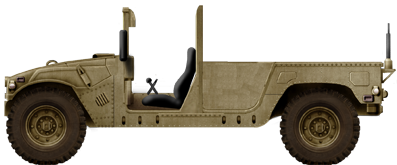
Humvee open top
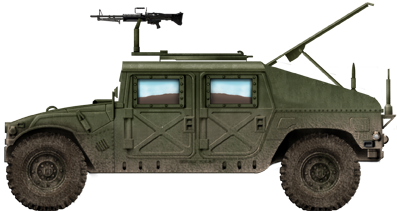
Humvee H1 M1025
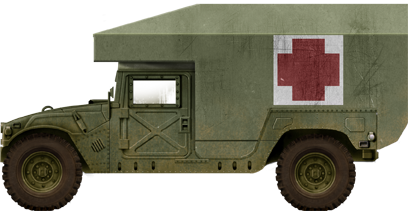
M997A2 Humvee
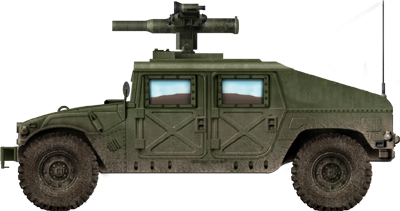
Humvee M1045 HOT
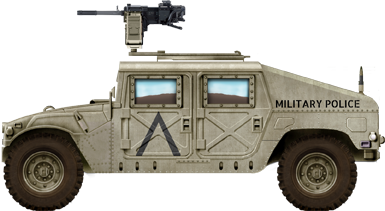
Military Police in Iraq
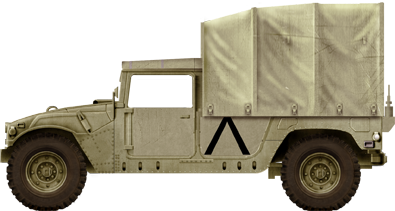
M998 Cargo in the gulf war
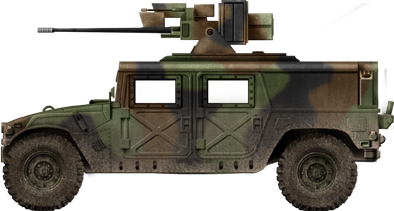
Humvee T75 - 20mm autocannon RWS
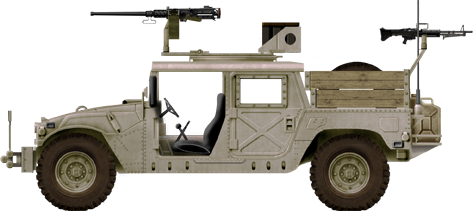
M1025 Humvee, Iraq war 1991.
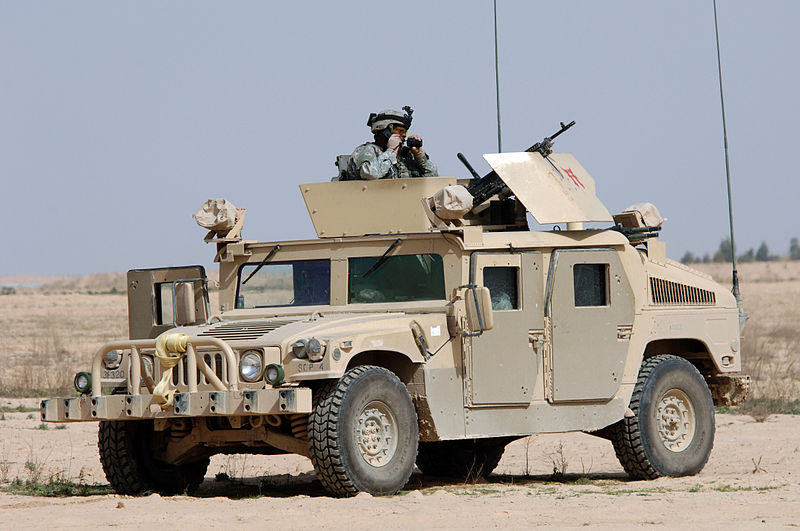
Up-armoured Humvees in patrol with Iraqi soldiers, Bravo Battery 3rd Battalion 320th Field Regiment Saladin Province Iraq March 2006
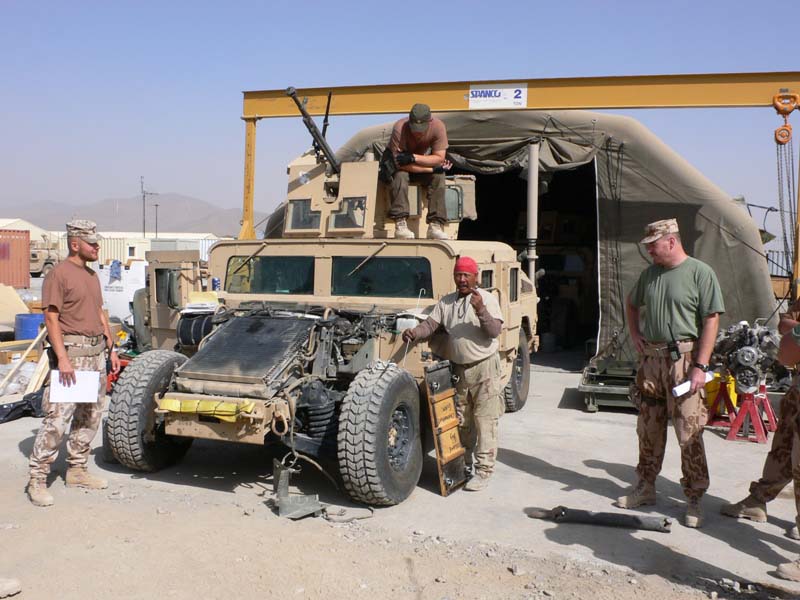
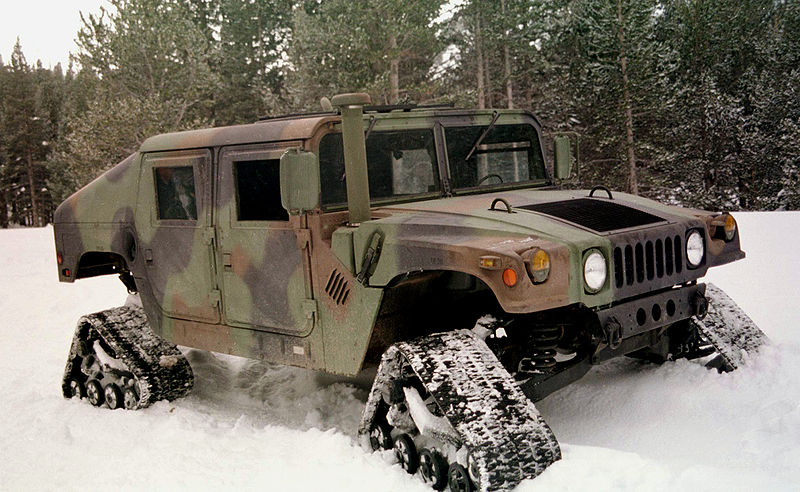
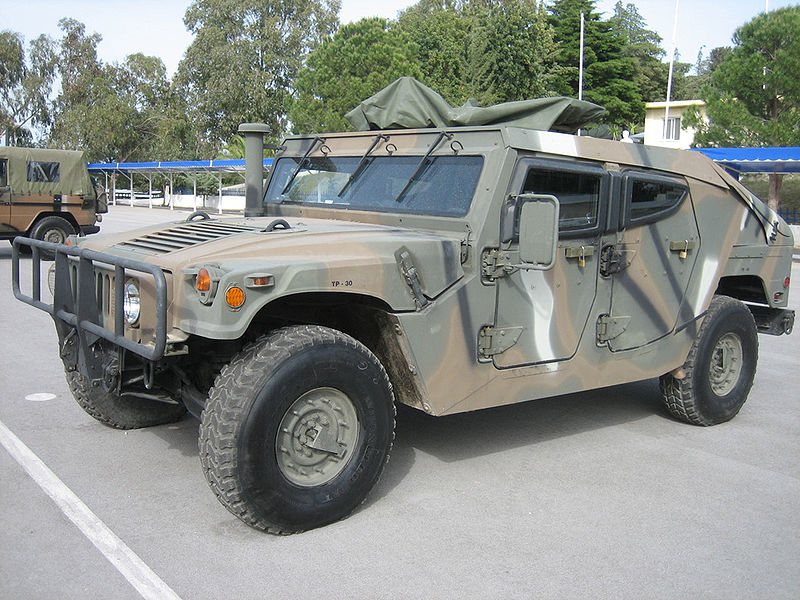
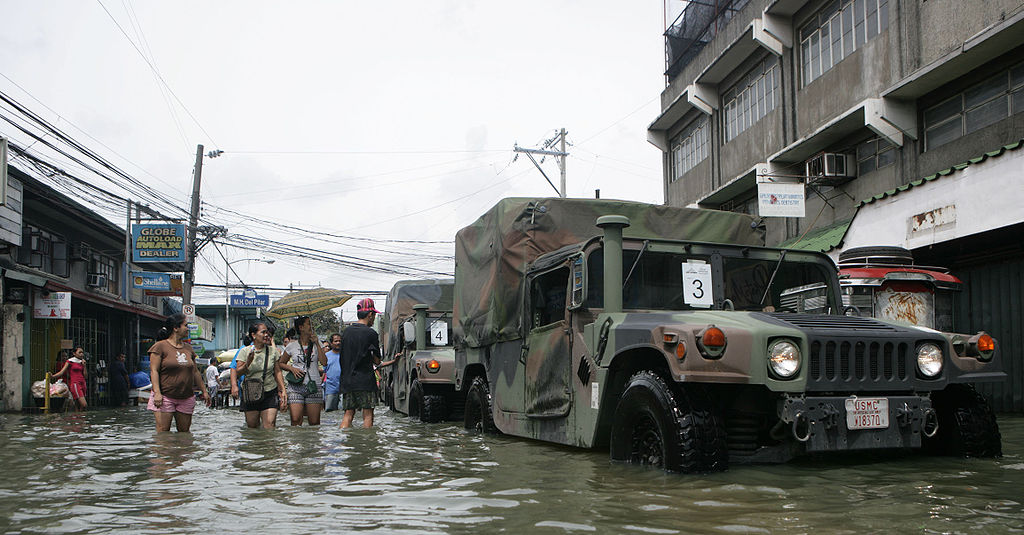
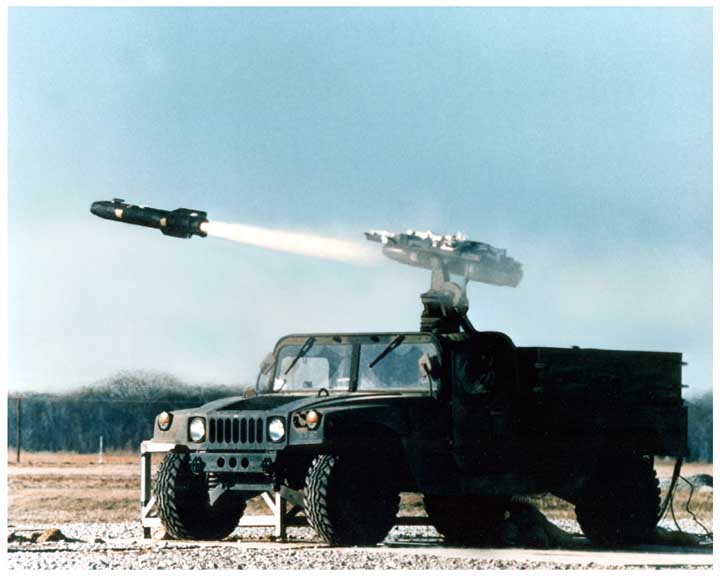
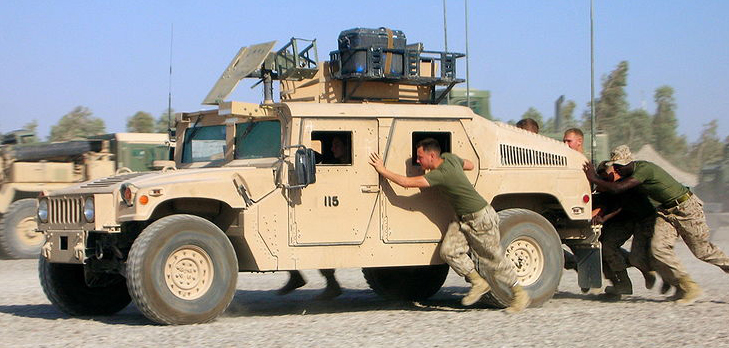
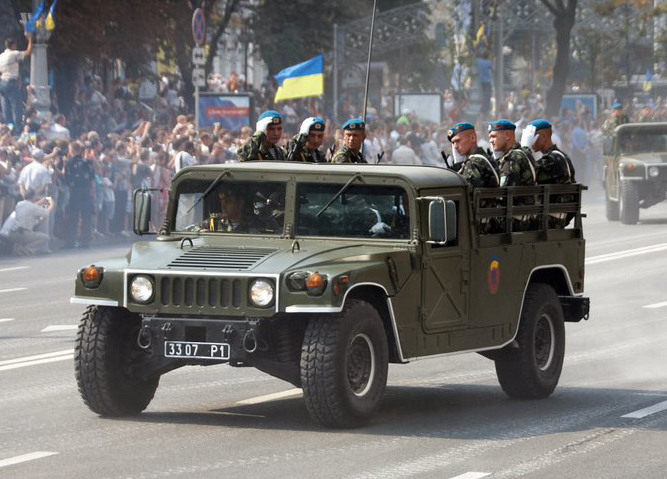
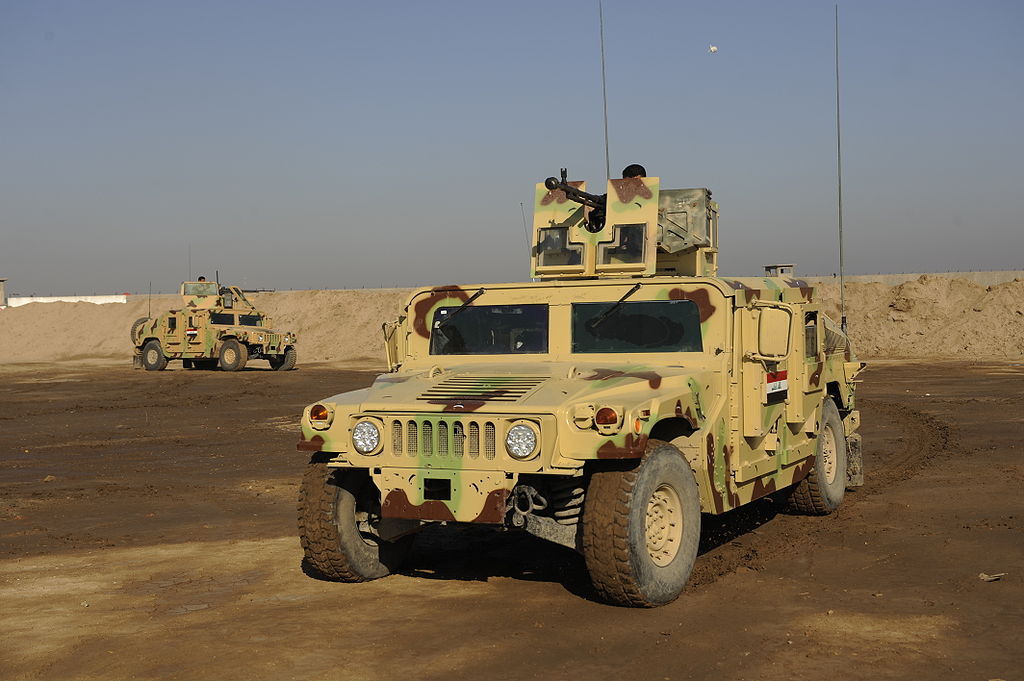
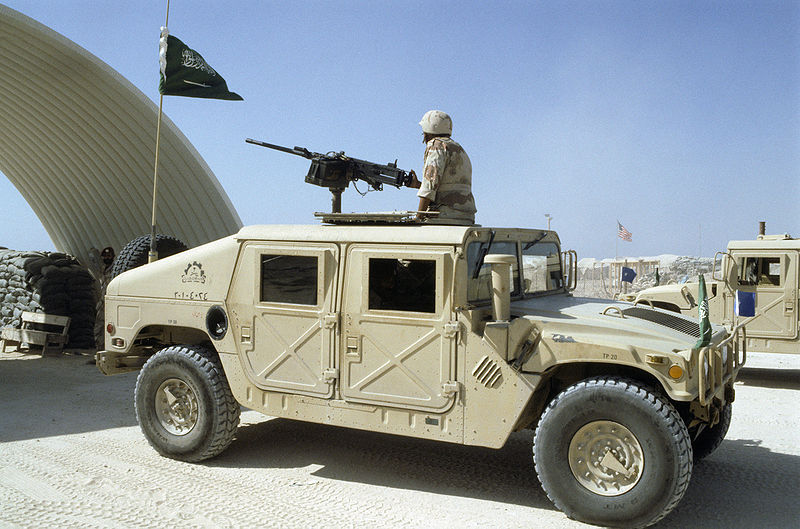

Cold War Tanks


































Cold war tanks posters

Cold War Main Battle Tanks

Cold War Soviet Army
Museums, Movies, Books & Games
The Tanks and Armor in pop culture
Tanks and armored vehicles in general are only really grasped when seen first person: The mass, the scale, it's all there. Explore also the way tanks were covered in the movie industry, in books and in video games.Movies:
Best tanks movie on warhistoryonline.com
On imdb.com
On bestsimilar.com/
miltours.com
liveabout.com/
watchmojo.com
Video Games:
pcgamesn.com
historyhit.com
levvvel.com
vg247.com/best-tank-games
mmobomb.com/
alienwarearena.com

